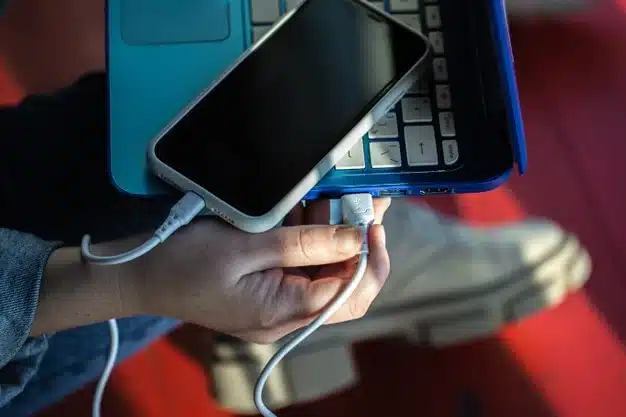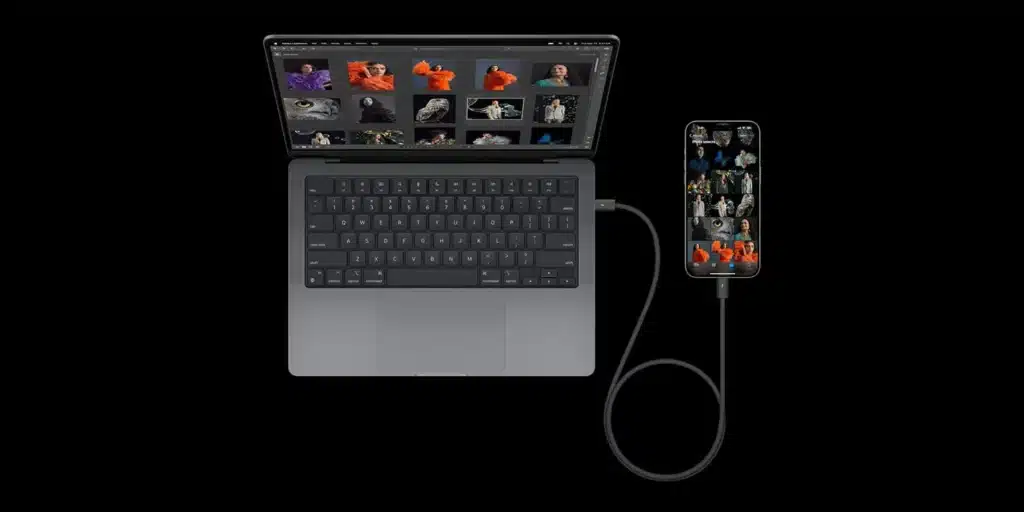Table of Contents
How to Connect iPhone to Computer With USB?
How To Connect iPhone To Computer With USB? Connecting your iPhone to a computer with USB is a convenient way to transfer files, backup data, sync content, and more. You can use applications like iTunes and Finder (on Mac) or File Explorer (on Windows) to access your iPhone’s files.
Before proceeding, make sure you have a compatible USB cable and that your computer is running the latest version of its operating system and iTunes. Also, try connecting your iPhone to a different USB port to rule out any issues with that particular one.
1. Plug the USB Cable:
Whether you’re transferring files, backing up your iPhone, or using Continuity features, the best way to connect your iPhone to your computer is with a USB cable. This allows you to sync your iPhone with iTunes and other programs, transfer music to and from the computer, and even use iCloud to wirelessly connect between computers.
First, make sure your computer is connected to the internet and has a functioning USB port. Next, find the USB cable that came with your iPhone and plug one end into the charging port on your phone. Then, plug the other end of the cable into your laptop. If your iPhone prompts you with a “Trust this computer?” alert, tap Trust.
Once you’ve connected your iPhone to your laptop, open iTunes on your computer and select your device from the list. Then, click the tab for the type of file you want to sync – music, photos, or videos.
Once you’ve successfully connected your iPhone to your computer, it will appear as a drive in your Windows File Explorer or Finder (depending on your operating system). You can then access the files on your iPhone and move them around. If you encounter any issues, try restarting your computer and checking the cable to ensure it’s working properly. If that doesn’t help, you may need to update your USB driver.
2. Turn on your iPhone:
There are several ways to connect your iPhone to a computer, including USB, wireless and cloud-based connections. Each offers advantages and disadvantages depending on your needs.
The easiest way to connect an iPhone to a computer is by using a USB cable. To do this, locate the charging port on your iPhone (usually at the bottom) and plug one end of the cable into it. Then, find a USB port on your laptop and plug the other end of the cable into it. Once the connection is complete, your iPhone should display a prompt asking for permission to access the computer. Tap “Trust” to grant permission.
If the first method fails, try connecting your iPhone to a different computer to see if the problem is isolated to your original PC. You can also try restarting your iPhone and computer to see if this fixes the problem.
Aside from being convenient, a USB connection can be used to transfer files, sync content, and perform other tasks. However, it is important to remember that the connection requires a physical connection and limits mobility compared to wireless methods. Moreover.
It can be difficult to fix issues with a USB cable if the hardware is damaged or has outdated drivers. Therefore, it is best to use a reliable USB cable and always ensure that the device is disconnected properly.
3. Tap “Trust”:
Connecting an iPhone to laptop computers has been a practice for many years, allowing for easy data transfer and backups, and charging. It’s also a great way to boost productivity and make the most out of your mobile device. However, it’s not uncommon to experience some problems with the process. Fortunately, there are a few steps you can take to fix this issue.
The first step is to ensure that you’re using a genuine Apple USB cable. Next, make sure that your computer’s operating system and iTunes are up to date. Finally, you should disable any antivirus or firewall software that may interfere with the connection.
If you’re using a locked iPhone, you’ll need to enter the passcode or use Touch ID or Face ID to unlock it. Once the phone is unlocked, tap “Trust” on the screen to allow the computer to access your information and settings.
Alternatively, you can try to reset your Trust settings on the iPhone. To do so, open the Settings app on your iPhone, and then tap General. Once you’ve done this, the computer will no longer be recognized as a trusted device, and the Trust alert will not appear again. The only downside is that this method will wipe your iPhone’s content. As such, it’s not recommended unless you have no other option.
4. Restart your computer:
When you connect your iPhone to a Microsoft laptop, you gain a number of advantages. These include seamless synchronization, file transfer, and backup. It also allows you to access advanced features like Handoff, AirPlay, Continuity Camera, and Instant Hotspot. The process can be streamlined even further with the use of third-party apps or software that offer extra features and a smoother integration.
However, if you’re having trouble with your connection, there are a few things you can try. First, ensure that you’re using a USB cable that’s compatible with your iPhone and computer. Then, make sure you’ve trusted your iPhone to the computer (either by entering a passcode or Touch ID/Face ID). Finally, restart your computer.
Depending on your BIOS setup, you may be prompted to press a key to boot from the USB drive. If this is the case, you’ll need to move the USB device up in the list of hard drives in your BIOS boot sequence. This will cause your computer to boot from the USB device every time you restart. Alternatively, you can try running a diagnostics tool. This will help you identify and fix any hardware or software issues that could be preventing your iPhone from connecting to the computer. You can download the tool from Apple’s website. It’s free to download and use.






Add comment